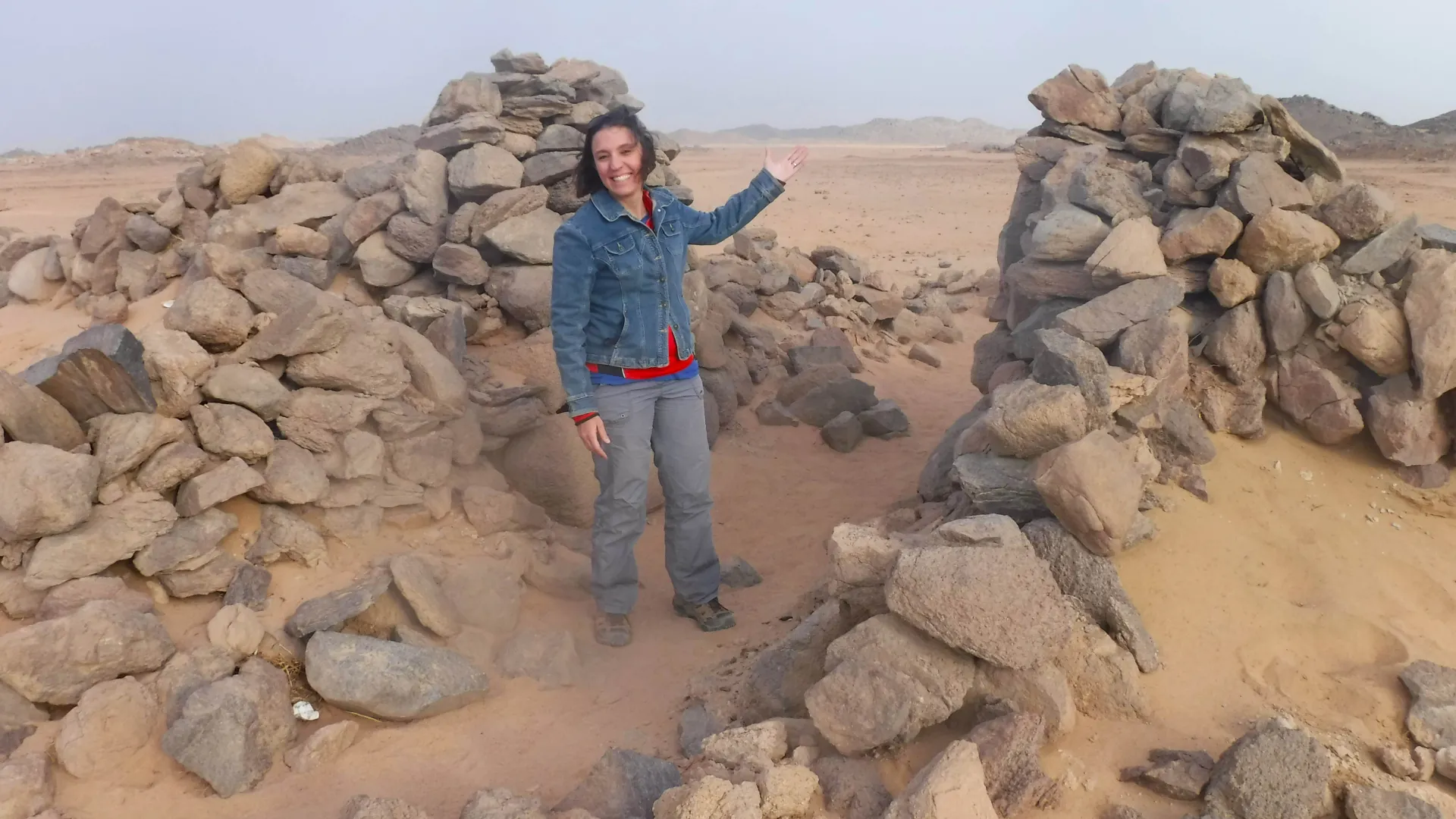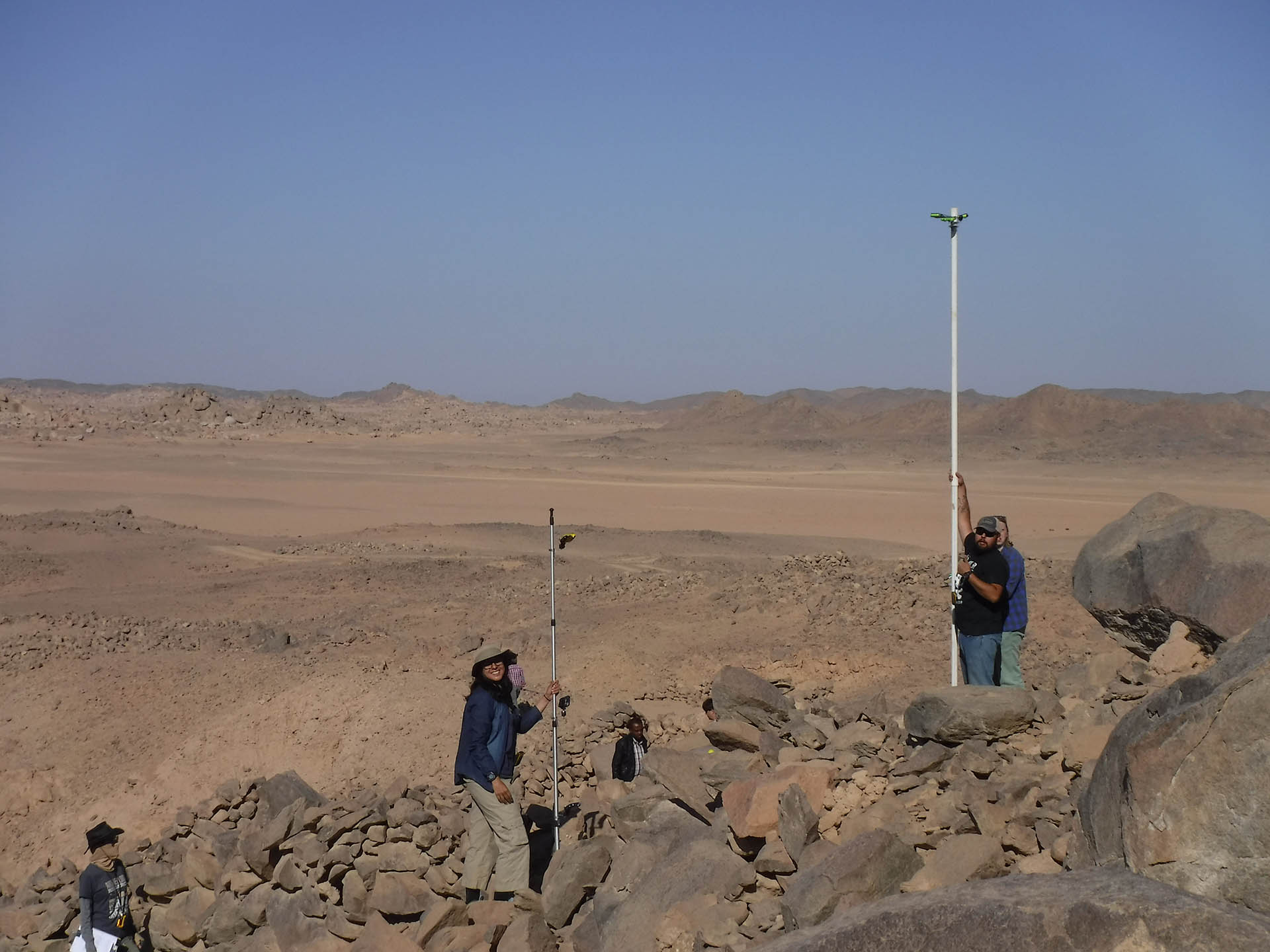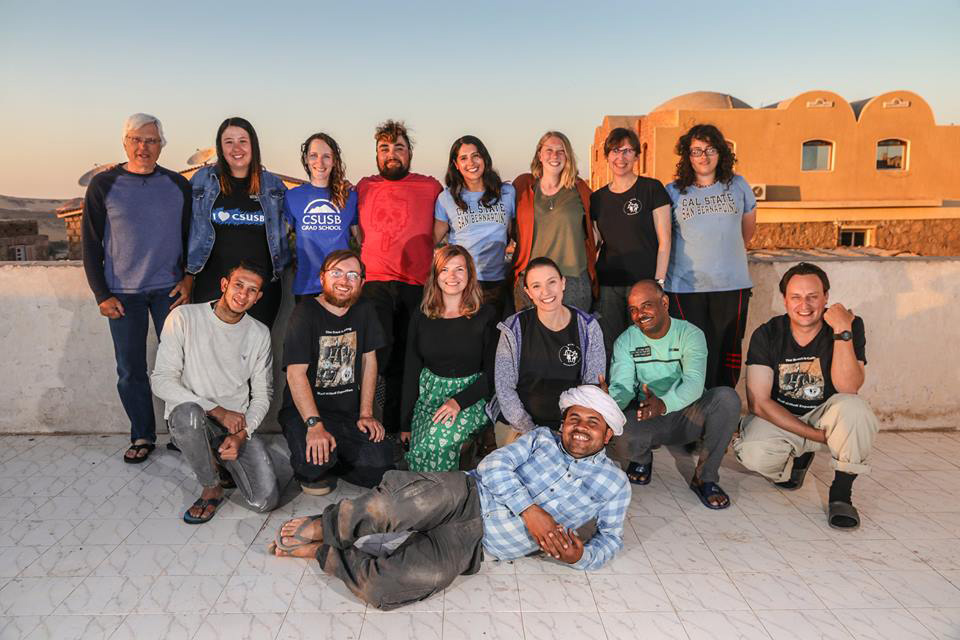Joe Gutierrez | Office of Strategic Communication | (909) 537-3007 | joeg@csusb.edu

Kate Liszka, the Benson and Pamela Harer Fellow in Egyptology and associate professor of history at Cal State San Bernardino, was awarded $50,000 from the Antiquities Endowment Fund (AEF) of the American Research Center in Egypt.
This U.S. Agency for International Development-funded grant will be used for conservation, restoration and 3D recording of over a dozen ancient rock inscriptions that are more than 4,000 years old and could provide new insights into the history of ancient Egypt.
Liszka is the director of the Wadi el-Hudi Expedition in Egypt. The national AEF grant will allow the Wadi el-Hudi team, including an internationally renowned conservator, to clean and preserve individual movable stones, called stelae, and to reconstruct them. A second team of 3D epigraphers will make perfect copies of reconstructed stelae and translate the hieroglyphs for publication.

The hope is that the reconstructed stelae will preserve new information about the history of ancient Egypt as well as new information about the organization of ancient Egyptian mining expeditions. Moreover, once the stelae are restored, the Wadi el-Hudi team will request for the stelae to be put on display at a museum in Aswan, Egypt, in order to incorporate Wadi el-Hudi into the cultural heritage and dynamic history of Egypt.
“The national conservation grant also brings attention and prestige to the important work that CSUSB is helping to support in Egypt,” Liszka said. “In turn, more people will learn about our burgeoning, unique program in Egyptology as well. This is a great honor for the Wadi el-Hudi team and for CSUSB.”
Liszka spearheads the study of ancient Egypt at CSUSB. She teaches several classes on ancient Egypt annually and oversees the Certificate in Egyptology program. She works directly with the university’s Robert and Frances Fullerton Museum of Art, which houses one of the most spectacular collections of ancient Egyptian artifacts on the west coast.
As director of the archaeological project at Wadi el-Hudi in the Eastern desert of Egypt, dozens of CSUSB students receive firsthand experience doing archaeological work in Egypt as part of the expedition researching and helping to publish the archaeological data about the expedition on campus. Liszka also integrates all of her archaeological work into her teaching at CSUSB for students to learn directly from primary data and learn how to interpret the data to write their own histories.

Wadi el-Hudi is a geologically rich area in Egypt’s Eastern Desert where pharaohs both 4,000 years ago and 2,000 years ago led expeditions to mine amethyst for royal jewelry and other luxury products. This is a large area made up of over 46 archaeological sites, mostly comprised of ancient mines and the settlements or camps next to each. Since 2014 the Wadi el-Hudi archaeological team, including several CSUSB students, have mapped the standing archaeology, excavated test archaeological areas, and surveyed the larger region.
Among many of their archaeological finds, the team has discovered over 100 new inscriptions, 20 of which were carved onto stelae. Over the years, many of these stelae have been broken and now suffer from substantial deterioration. Excavations at Wadi el-Hudi have also discovered new fragments of stelae that directly connect to the pieces that were brought to the local museum in Aswan, over 70 years ago.
Visit the American Research Center in Egypt’s website to learn more about its mission.